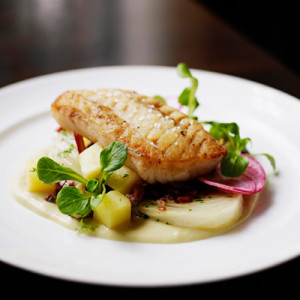 A food-lover’s guide to ordering smarter at your favorite restaurant.
A food-lover’s guide to ordering smarter at your favorite restaurant.
The Living Social “Dining Out” survey found that the average U.S. adult eats 4.8 meals per week in a restaurant. The most popular restaurant meal is lunch, with 2.6 meals eaten on average each week — both carryout and dining — followed by 1.4 sit-down dinners per week and .8 brunch or breakfast meals per week. But if you are watching your weight dining out too often can be a recipe for weight-loss disaster. In fact, studies have shown that people who dine out tend to eat 500 more calories than they would if they ate at home. But that’s not to say you should never enjoy another restaurant meal!
Here are 7 easy ways to keep yourself on track at restaurants.
 Pick the restaurant yourself.
Pick the restaurant yourself.
After you’ve set plans to dine out with family or friends, be sure to research nearby restaurants that serve healthy fare; you’ll be less tempted to indulge in fattening or fried foods. You can use the Healthy Dining Finder, a dietician-approved site that can help you locate healthy dining establishments across the country and in any price range. Another great feature on this website is the sodium savvy section, which helps you choose restaurant menus that contain less sodium.
 Do some online sleuthing ahead of time.
Do some online sleuthing ahead of time.
Most restaurants have a website that includes a link to their menus. Before you head out, get an advance look at the options so you can avoid confusion or making any snap decisions on what to eat. This is also a great opportunity to review all the ingredients that are included in the meal, so you can make the best food choices when you get there. If there is an entrée you’d really like to have but are worried about the calories, consider sharing the dish with a dining companion or having half of the meal pre-boxed in a carryout container.
 Get your server on your side.
Get your server on your side.
Don’t be shy about asking the server questions about your meal. Ask him or her to briefly explain what kind of foods are included in the dish and how it’s prepared. Is it cooked in animal fat or extra-virgin olive oil? How big are the portions? Can you replace the pasta with a vegetable side dish? This will give you a better sense of what dishes you can enjoy and which ones you should avoid. In general, go for foods that are grilled, seared, stir-fried, or poached with wine and herbs.
 Skip the obvious offenders.
Skip the obvious offenders.
Those little extras are often the biggest calorie culprits. That basket of bread can be so very inviting especially when you are hungry and waiting for your meal to arrive.
Butter and refined white bread are big no-nos; butter is high in saturated fat and white bread will make your blood-sugar levels spike. Alcohol can also really add up the calories in a meal. If you decide you are going to have a drink, stick to one drink only and skip the dessert tray.
 Sip smartly.
Sip smartly.
Instead of soda, sugary drinks, and caloric cocktails, enjoy a glass of water or iced tea before your meal. Drinking water before your meal will help you to become a bit fuller faster. If you’re enjoying alcohol, stick to one glass of red or white wine. Remember to eat more slowly, and pause between each bite. Enjoy the conversation and company without rushing through your meal.
 Watch your portion sizes.
Watch your portion sizes.
Visualize a 2-cup bowl and a 7- or 9-inch plate as you’re served. Arrange the food on the plate as you would at home and be sure to follow the Smart Plate Guidelines for dinner. These portion sizes give you an idea of how much you should eat at each mealtime. Try to fill 75 percent of your plate with plant-based foods, including whole grains, vegetables, and fruits. Be sure to stick to 3 ounces of lean protein, such as grilled chicken breast, sirloin steak, or salmon. Have the rest boxed up ahead of time so you will not be tempted to eat the whole serving. This will make a nice lunch for tomorrow.
 Eat slowly and mindfully.
Eat slowly and mindfully.
Slow, pleasure-oriented dining is the best way to enjoy your meals. It helps you taste and savor your food, while appreciating the conversation that goes with it. Eating slowly is also a great way to practice mindful eating. Ask yourself: Am I eating this because I’m hungry? How does it taste? Do I feel satisfied? This will help you draw a connection with the emotions you feel when you eat and give you an understanding of how your body responds to the food you’re eating.


